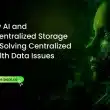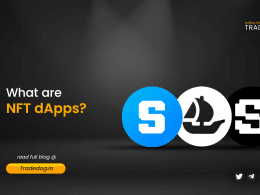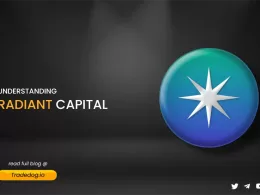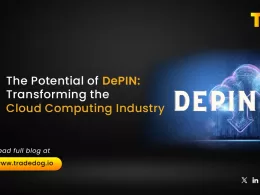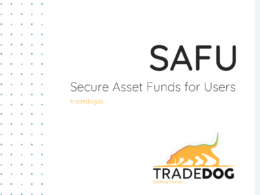Quick Links
Over the past decade, social media has become an undeniable force, connecting billions of people worldwide and permeating countless industries. With a staggering 5.04 Bn users, representing 62.3% of the global population, it’s evident that social media holds significant sway in today’s society. On average, internet users spend 143 minutes daily on various social platforms, which underscores its immense importance in our daily routines.
However, despite its widespread popularity, social media has its own shortcomings. Centralized control, censorship, data ownership, and the lack of monetization for content creators are among the key issues plaguing these platforms.
SocialFi, which blends social media with decentralized finance, aims to address the shortcomings of the existing social media landscape by empowering creators and users with control, ownership, and monetization opportunities. The SocialFi industry presently holds a market capitalization of ~ $5.45 Bn. In this blog, we will explore the need and key features of SocialFi and also learn more about some of the top SocialFi projects.
Why do we need SocialFi?
- Decentralized Storage: SocialFi stores data on a distributed network instead of a single company’s servers. This ensures that no single entity controls information and makes it much harder to misuse the data.
- Data Privacy: In Web2 platforms, user data is often gathered and profited from without clear transparency or consent. This leads to concerns about privacy breaches, identity theft, and unauthorized use of personal information, highlighting the need for stronger data privacy measures.
- Censorship: Centralized platforms can censor or limit specific content according to their own guidelines or external influences. This can suppress free expression, silence marginalized voices, and restrict access to important information. As such, there’s a growing demand for platforms that prioritize freedom of speech and resist censorship efforts.
Key Features:
- Monetization: Until 2022, Facebook shared less than 1% of its ad revenue with creators. Through SocialFi content creators have the opportunity to engage directly with their audience or fans while receiving direct payment. Through decentralization, intermediaries are eliminated, ensuring creators receive equitable compensation.
- Data Ownership: In traditional social media platforms, user data is owned by the companies, leaving users uncertain about its usage. However, in SocialFi, users retain full ownership and control over their data. The integration of blockchain technology guarantees the security and integrity of this data.
- Tokenization: Content creators can generate digital tokens that symbolize their content and user’s ownership within the community. These tokens enable various functionalities such as governance participation, content access, etc. Additionally, they can serve as a form of currency within the platform ecosystem.
Top SocialFi Projects
A) Friend.tech
Friend.Tech is a decentralized social media platform facilitating direct connections between creators and their audience, allowing content monetization. Operating on Base Chain, it translates the creator’s influence into Keys, which serve as shares providing access to exclusive private chats, advice, and other account perks.
Pros:
- Facilitates direct interaction between creators and users via private chats, effectively bridging the gap.
- Users gain access to exclusive content and various perks offered by creators, enhancing the overall user experience.
- Both creators and users retain full control over their experience on the platform.
Cons:
- Users express concern over the need for more comprehensive documentation regarding privacy policies.
- It operates invite-only, limiting the application’s accessibility to new users.
- The absence of a white paper from the team leaves users desiring more clarity about the platform’s long-term vision.
Key Statistics
a) Users and Fees
In August 2023, the platform experienced a remarkable surge with 110,000 new users joining within just two weeks. As at the date of writing, the platform has ~ 915K buyers and ~ 271K sellers.
b) Transactions and TVL
Friend.tech currently has recorded over 14 Mn transactions to date. The project garnered attention in August 2023, as evidenced by transaction data. During the first two weeks, users drove a remarkable ~ 126K transactions, resulting in a substantial trading volume of $80 Mn. However, it has been experiencing fluctuations since then and started declining in October. The transactions have dropped to over 99% from the peak in September 2023 to June 2024.
B) Farcaster
Built on the optimism network, Farcaster is a decentralized social media protocol, empowering the development of decentralized social media applications atop its framework. Its primary objective is to address four significant challenges prevalent in social media apps:
- User identity
- Authentication
- Data availability
- Consistency
Farcaster integrates both on-chain and off-chain functionalities. Identity-related data is stored on-chain, while engagement and post data are maintained off-chain. Warpcast serves as the flagship application within the Farcaster ecosystem. Resembling the X platform, it enables users to publish, like, and share posts seamlessly.
Pros:
- The platform aims to reduce bot activity by implementing an upfront fee from users. Warpcast charges $5 from new users and this measure effectively combats spam accounts.
- Farcaster also demonstrates interoperability, indicating its ability to communicate with other blockchain networks seamlessly. This facilitates the smooth exchange of data, digital assets, and information across various protocols.
Cons:
- It requests new users to make a payment for platform usage, which may not be acceptable to everyone and might act as an entry barrier.
- You can buy extra storage units once they are full, but the process is complex and technical as the Users might lack technical expertise and need to learn and spend time on it.
Key Statistics: Frames
a) Active Users
After the introduction of Frames on its social media application Warpcast, the Farcaster protocol experienced a remarkable surge, with daily active users skyrocketing by an astounding 400%. So far, Farcaster has generated ~ $1.67 Mn in revenue.
b) User Activity
As of 6th June, over 68% of casts have received zero reactions, indicating that maximum casts lack engagement. Surprisingly, this percentage has risen following the launch of frames.
c) Transactions
The total number of Farcaster frames transactions to date is 143,488. Over 70% of on-chain transactions from the past 30 days are processed on Base, primarily due to the low network fees.
C) Lens Protocol
Lens Protocol is a decentralized social graph built on the Polygon blockchain for social media. A social graph is a data structure that represents relationships between individuals or entities within a network. Lens Protocol allows users to own and control their digital identities, content, and interactions. It offers a permissionless and composable framework for applications to create social media platforms within the Web3 space.
Each profile within the Lens Protocol is unique, requiring users to initially create and publish their profile. Subsequently, users gain the capability to post, engage in discussions, and distribute content across various platforms, including Hey, Phaver, and numerous others.
Pros:
- User data and activities are stored in ERC-721 NFTs, granting users ownership of their social network and enabling effortless transfer of their data among various applications leveraging the Lens Protocol.
- Lens Protocol’s design is highly modular, allowing for the easy addition of new features and fixes. This flexibility ensures that the platform can evolve and adapt over time while preserving immutable user content.
- Content creators can monetize their work directly through features like the Collect option, allowing followers to purchase content under the creator’s terms.
Cons:
- Blockchains have limited on-chain storage capacity, necessitating additional storage solutions for content. All content within Lens Protocol is stored in distributed file storage systems such as IPFS, Arweave, or even services provided by AWS S3. Consequently, there is a potential risk of manipulation of user data.
Key Statistics:
a) Users
- 92% of the users on Lens protocol come from three apps: Phaver contributes 51.7%, followed by Hey with 25.9%, and Orb with 14.4%.
- As at the date of writing, 398.3K profiles have been created on the Lens protocol.
b) Monetization:
The average revenue per user in the last 30 days is $44. The average revenue per user generated over 30 days is $412 for the top 10% of users.
Conclusion
SocialFi has emerged as a solution to the challenges faced by traditional social media platforms. The world is rapidly moving towards creator economy models, and this marks a significant stride in that direction. At present, the market for SocialFi is relatively small with a limited user base. It will require time to gain momentum. However, as the industry matures and people become more acquainted with these platforms, we can anticipate a brighter future for SocialFi.

